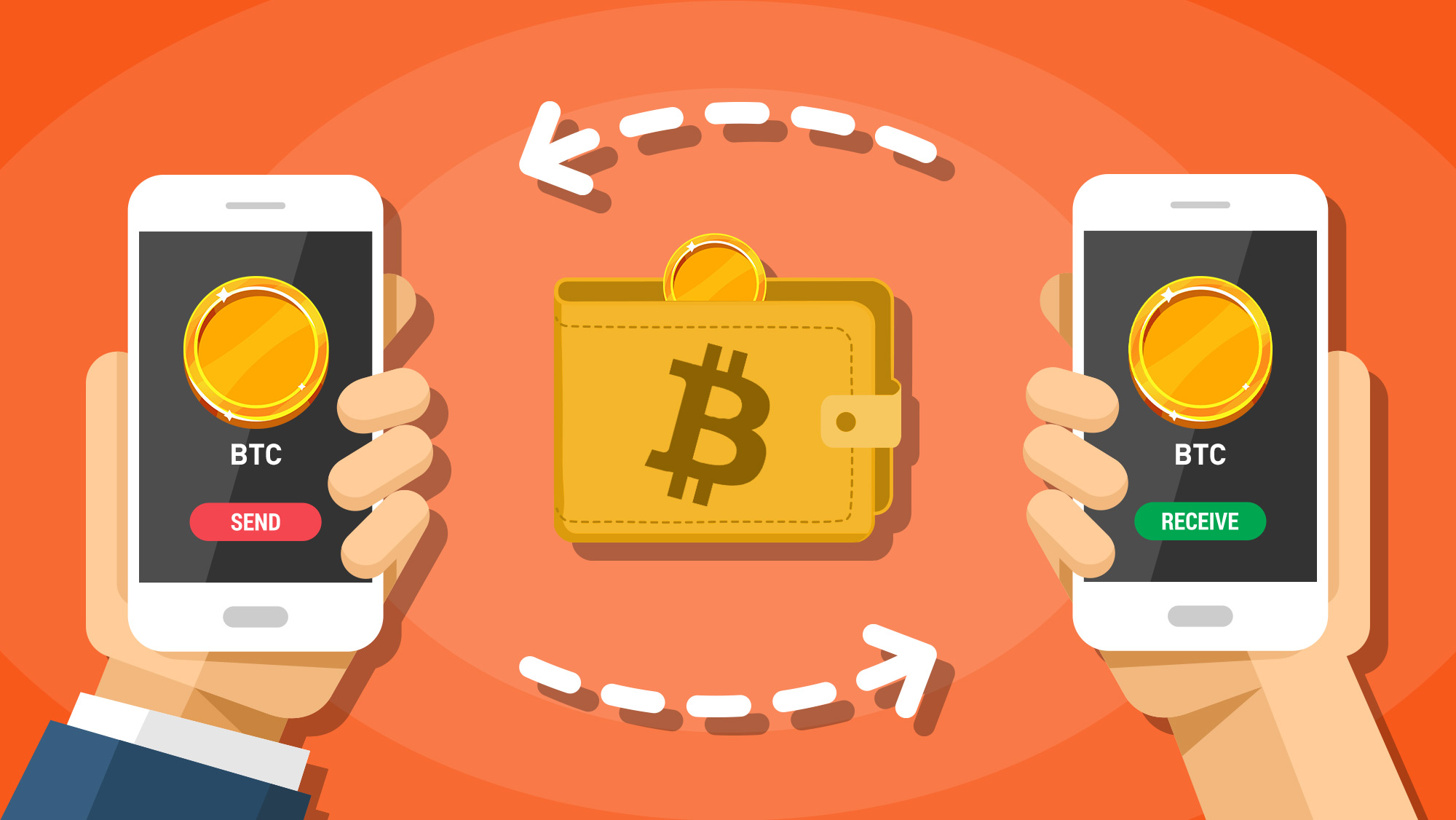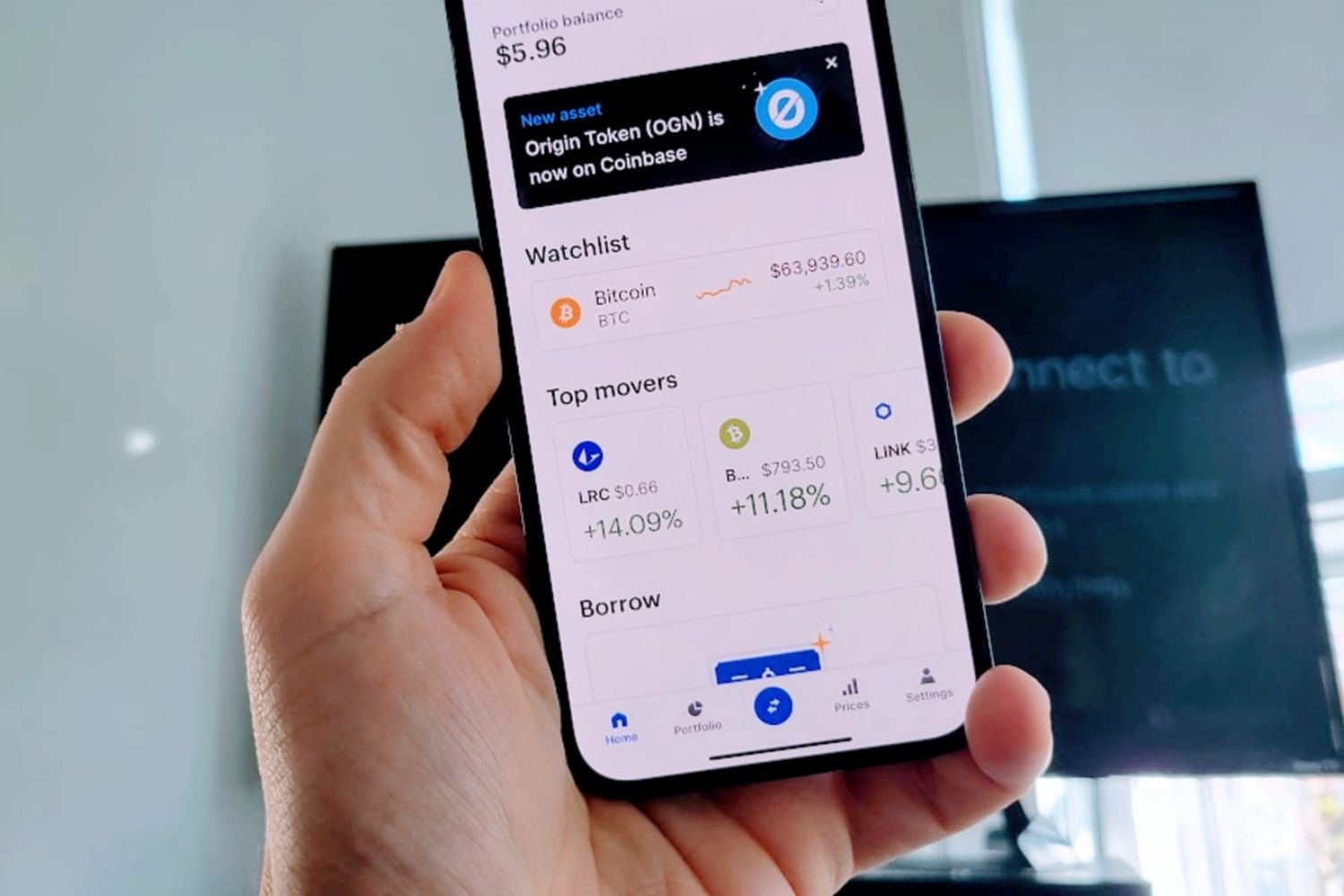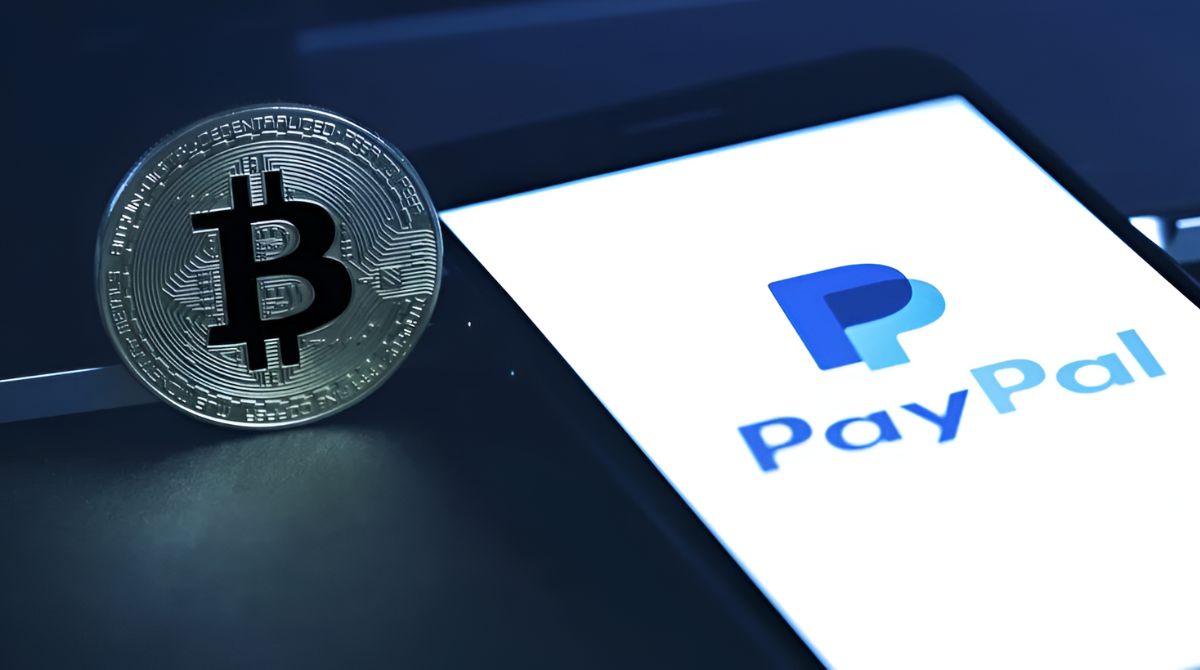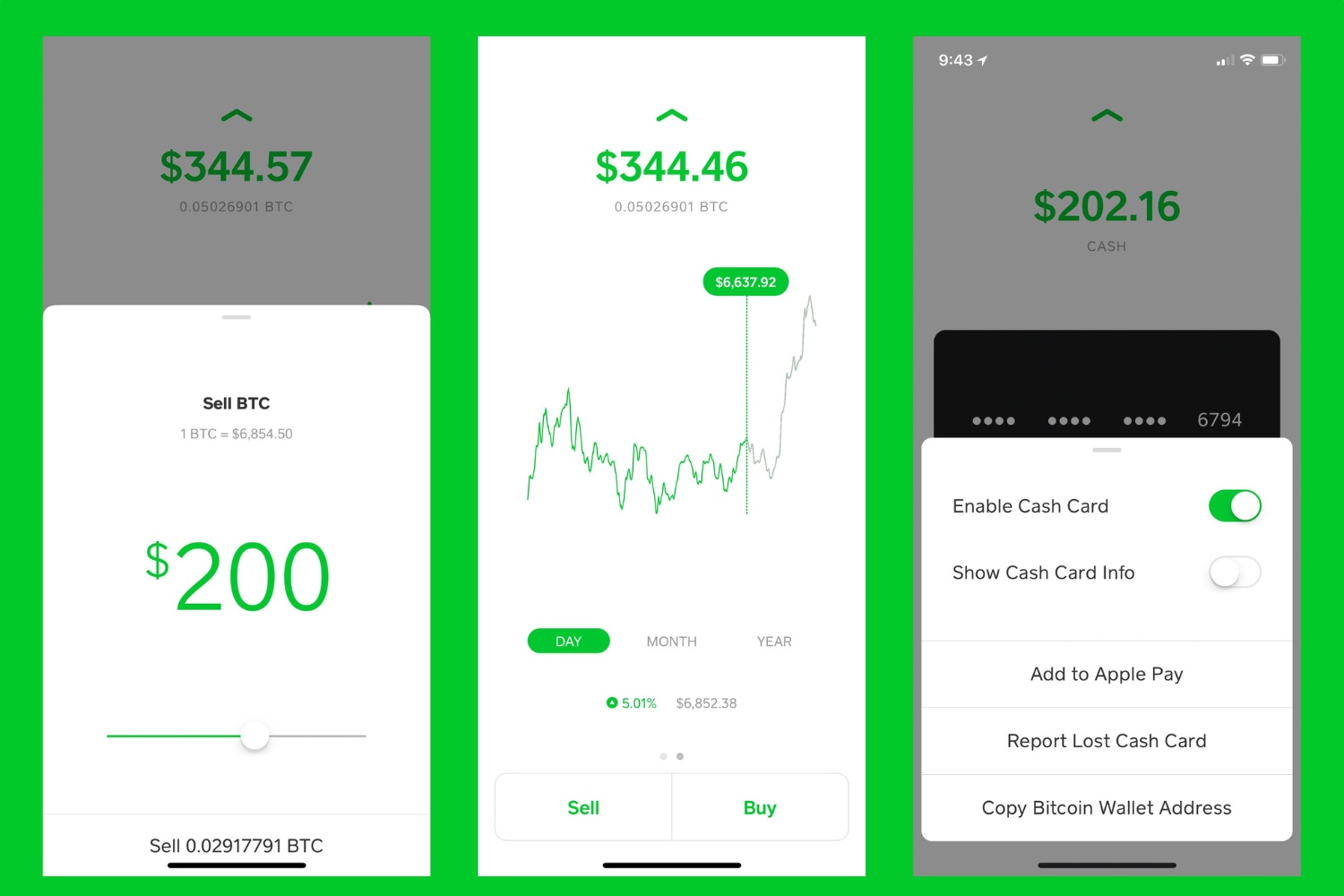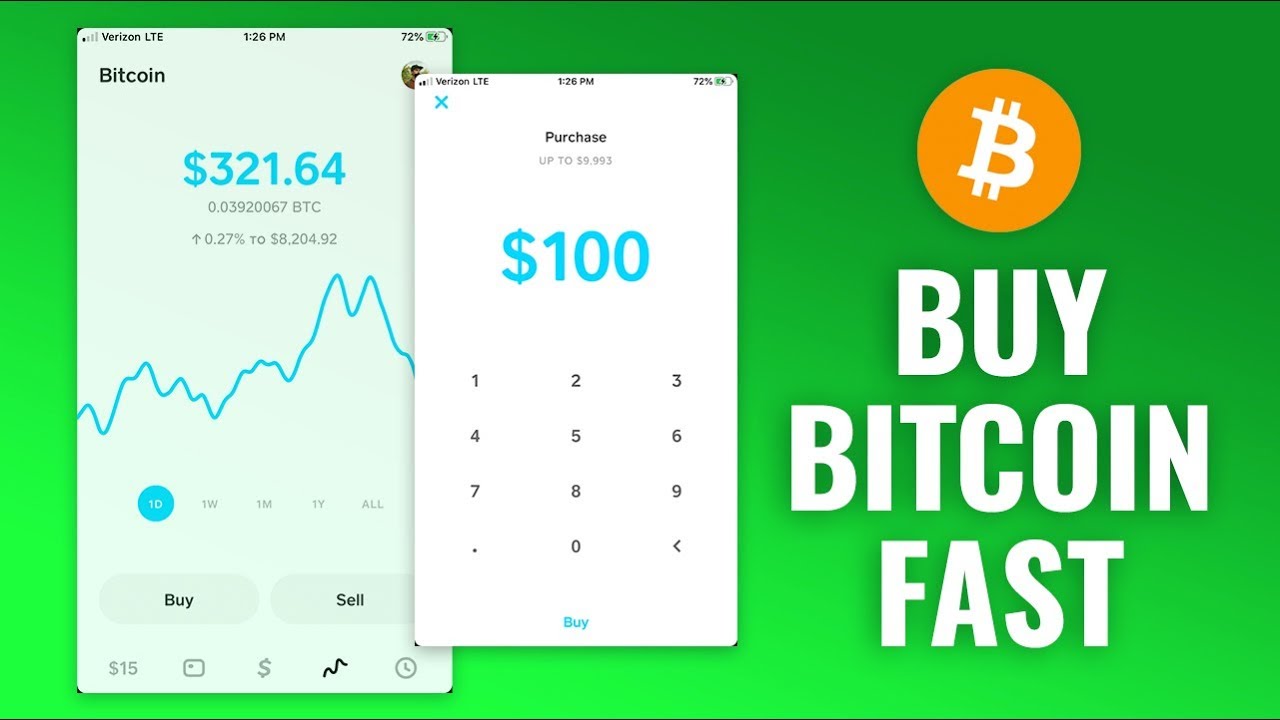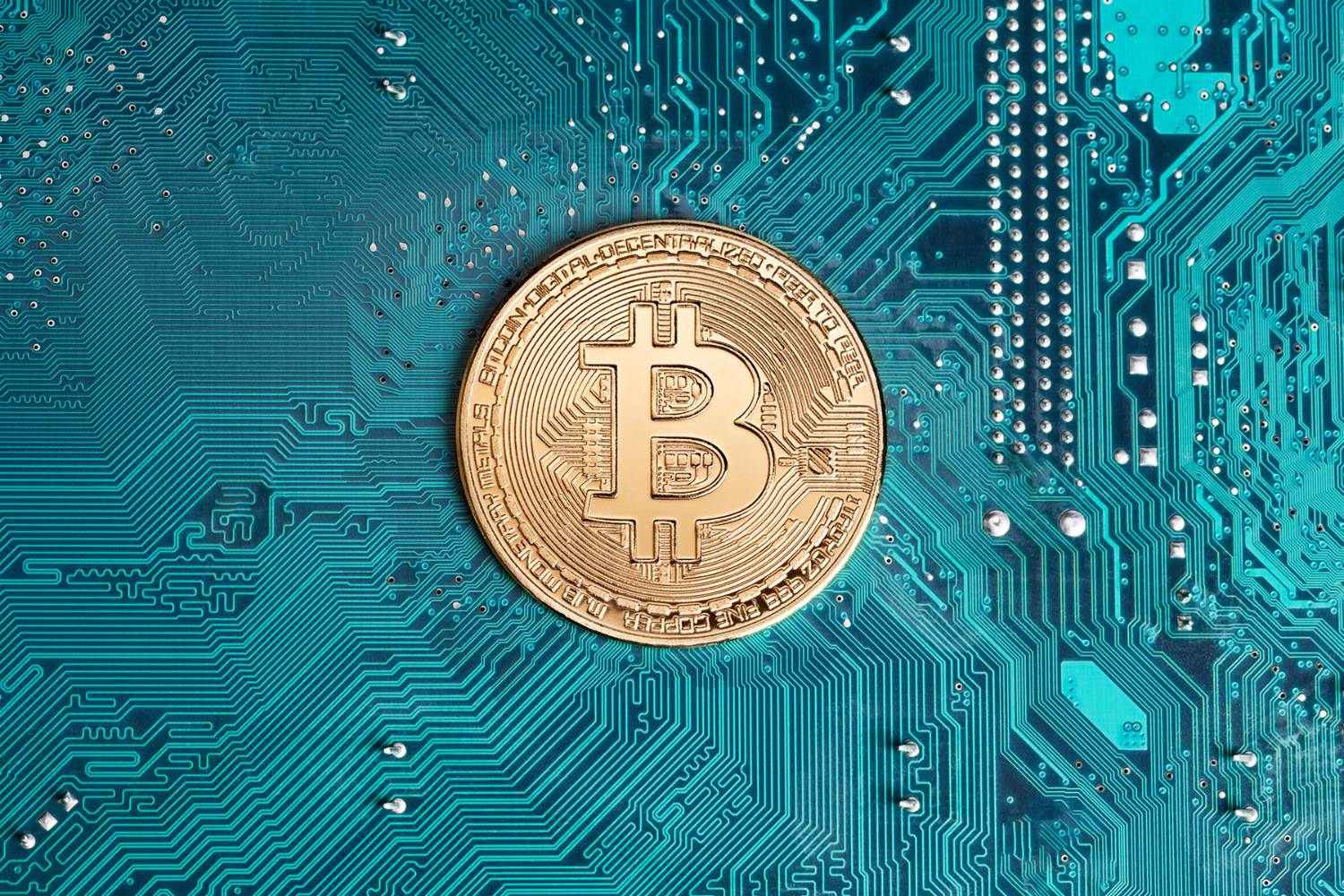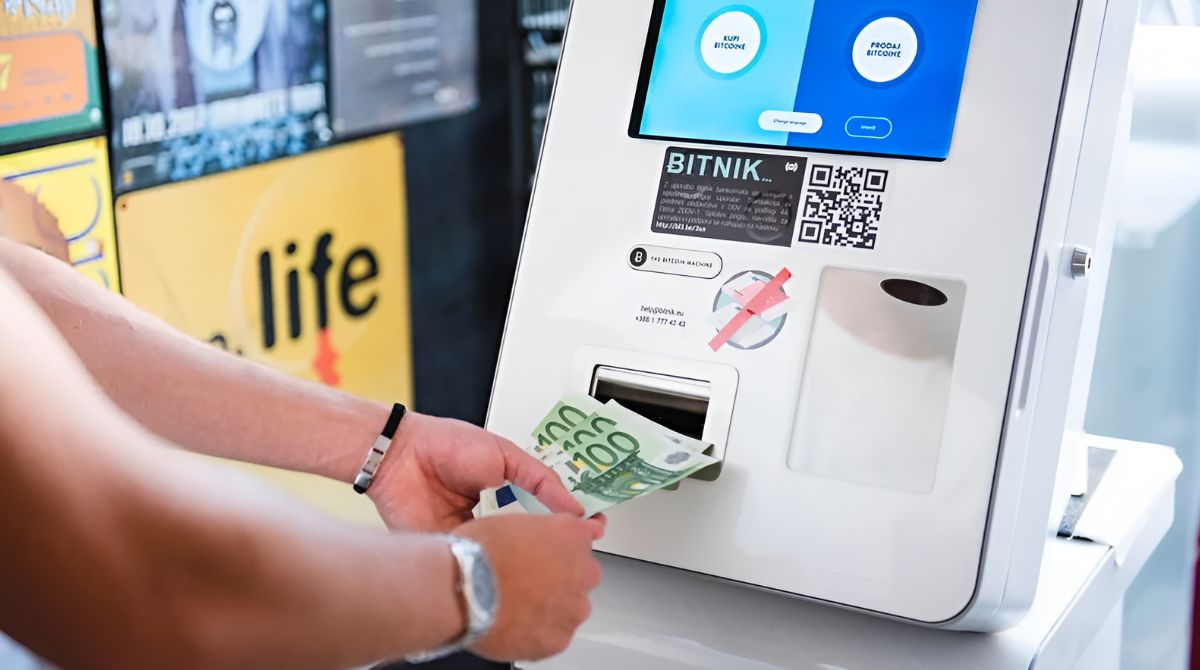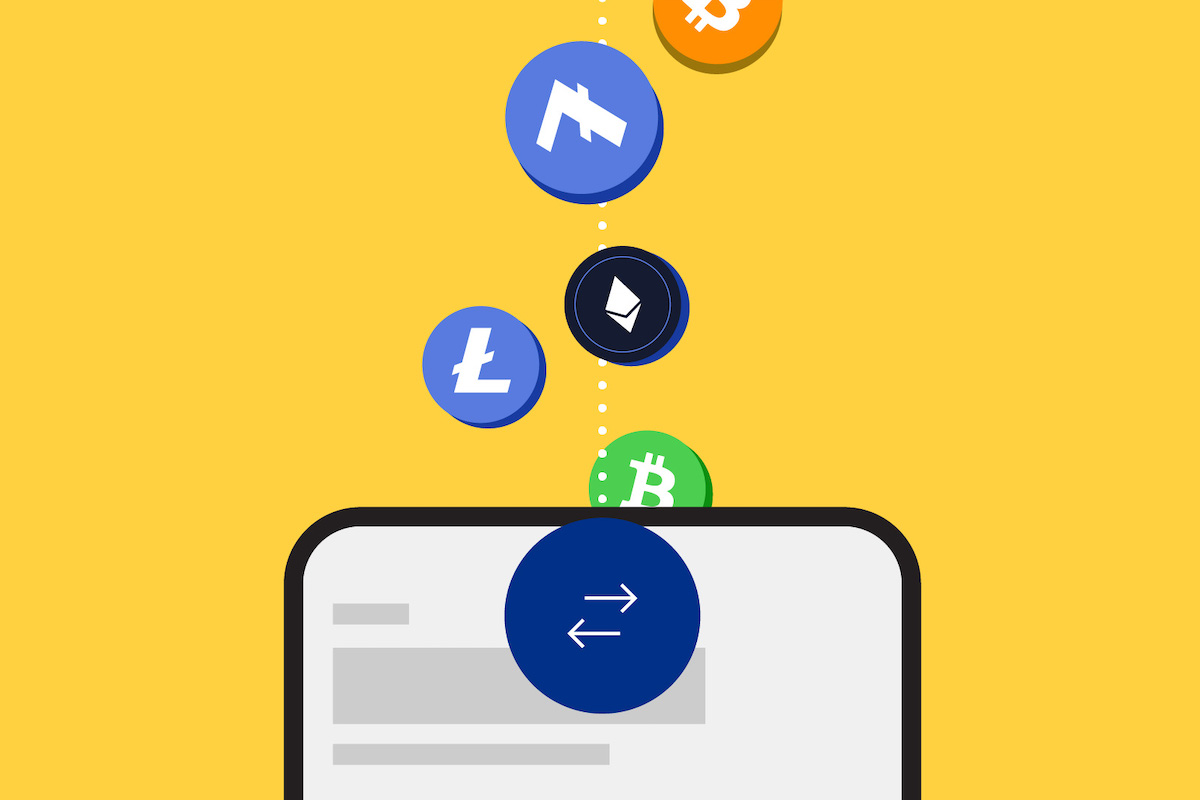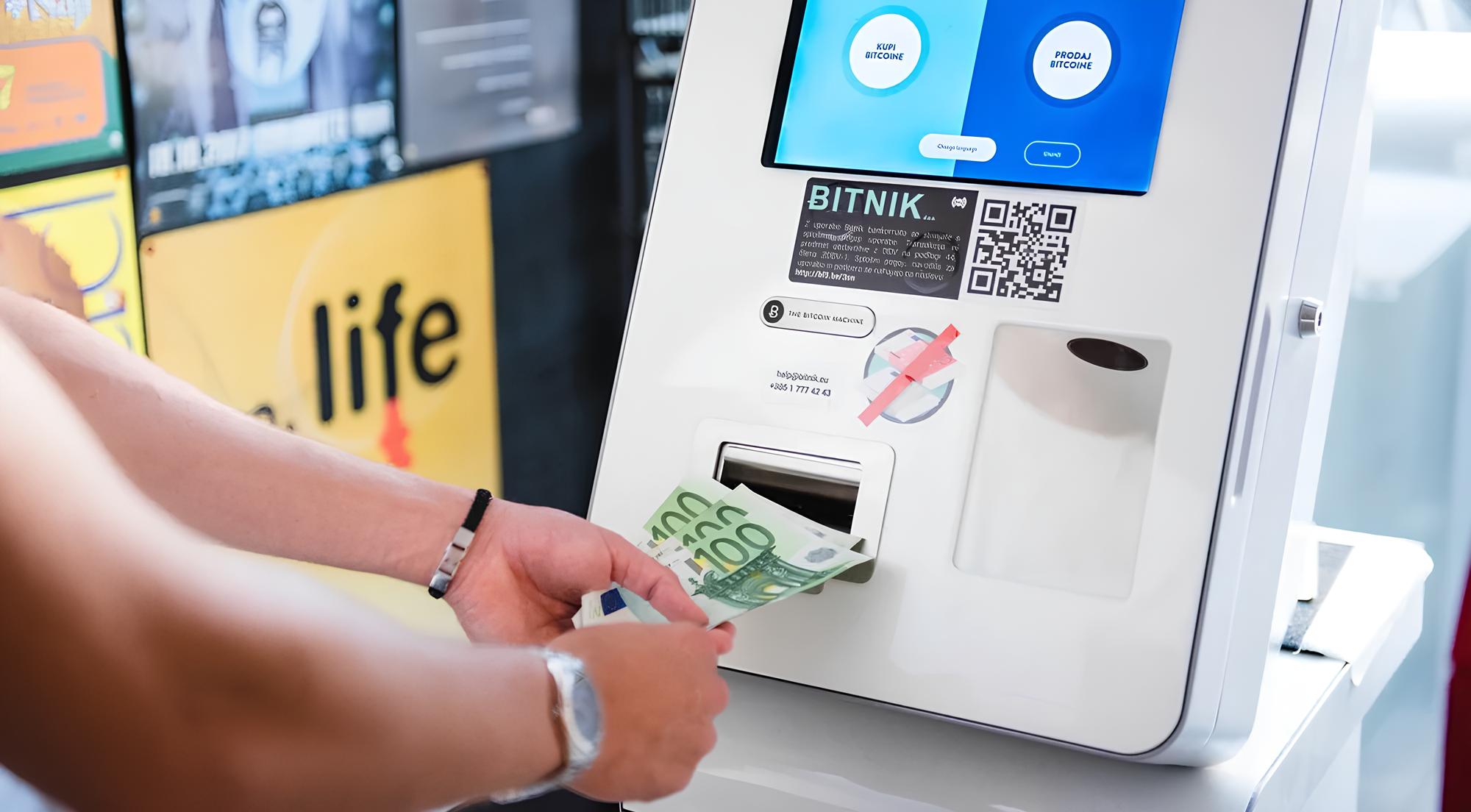Introduction
Welcome to the world of Bitcoin, the revolutionary digital currency that has taken the financial world by storm. Whether you’re a seasoned investor or just starting to dip your toes into the world of cryptocurrency, understanding how to send Bitcoin is an essential skill to have.
Bitcoin, introduced in 2009 by an anonymous person or group of people using the pseudonym Satoshi Nakamoto, is a decentralized digital currency that allows for secure, peer-to-peer transactions without the need for intermediaries such as banks or governments. It offers a new way to transfer money globally, instantly, and with lower fees compared to traditional banking systems.
Bitcoin works on a technology called blockchain, a distributed ledger that records and verifies all transactions made with the cryptocurrency. The blockchain ensures transparency and immutability, making it nearly impossible for anyone to tamper with or falsify the transaction history.
If you’re new to Bitcoin, setting up a Bitcoin wallet is the first step in getting started. A Bitcoin wallet is a digital wallet that allows you to store, send, and receive Bitcoins securely. There are various types of wallets, including desktop wallets, mobile wallets, hardware wallets, and online wallets. Each has its own unique features and security measures, so it’s important to choose one that suits your needs.
Once you have your Bitcoin wallet set up, the next step is obtaining Bitcoin. There are several ways to acquire Bitcoin, including buying it from exchanges, mining it through a process that involves solving complex mathematical problems, or receiving it as payment for goods and services.
In this guide, we will explore two common methods for sending Bitcoin: using a wallet and using an exchange. Whether you’re sending Bitcoin to a friend or paying for a purchase, understanding these methods will give you the confidence to navigate the world of Bitcoin transactions securely.
It’s important to note that security is paramount when sending Bitcoin. We’ll discuss best practices for ensuring the security of your transactions and touch on understanding transaction fees, as they can vary depending on network congestion and other factors.
Now that you have an overview of what’s to come, let’s delve into the fascinating world of sending Bitcoin and discover how you can become a part of this global digital currency revolution.
What is Bitcoin?
Bitcoin is a decentralized digital currency that allows for instant, secure, and peer-to-peer transactions without the involvement of banks or governments. It was created in 2009 by an anonymous person or group of people using the pseudonym Satoshi Nakamoto.
Unlike traditional fiat currencies, such as the US dollar or the Euro, Bitcoin is not backed by a central authority and is not tied to any physical assets. Instead, it operates on a technology called blockchain, which is a distributed ledger that records and verifies all transactions made with the cryptocurrency.
The blockchain ensures transparency and immutability by storing transaction data in blocks that are linked together in a chronological order. Each block contains a unique identifier called a hash, along with the hash of the previous block, creating a chain of blocks. This decentralized nature of the blockchain makes Bitcoin resistant to censorship, fraud, and hacking attempts.
Bitcoin operates on a peer-to-peer network of computers, known as nodes, that collectively maintain and validate the blockchain. These nodes work together to verify the authenticity of each transaction by solving complex mathematical problems, a process known as mining. Miners are rewarded with newly minted Bitcoins for their computational work.
One of the key features of Bitcoin is its limited supply. There will only ever be 21 million Bitcoins in existence, which is predetermined by the Bitcoin protocol. This scarcity is designed to create value and prevent inflation, making Bitcoin a deflationary currency.
Bitcoin transactions are conducted using cryptographic keys. Each user has a pair of cryptographic keys: a public key that is shared with others to receive Bitcoin, and a private key that is kept secret and used to sign transactions. These keys ensure the authenticity and security of each transaction.
Bitcoin has gained popularity due to its potential for anonymity, its global accessibility, and its ability to facilitate borderless transactions with low fees. It has been adopted by businesses and individuals worldwide, and its value has experienced significant fluctuations over the years, attracting both investors and speculators.
Overall, Bitcoin represents a new paradigm in the world of finance, offering a decentralized and transparent alternative to traditional banking systems. Its disruptive technology has the potential to reshape the way we think about money and transactions, opening up new possibilities for individuals to take control of their finances.
How does Bitcoin work?
Bitcoin operates on a technology called blockchain, which is a decentralized ledger that records all transactions made with the cryptocurrency. This ledger is maintained by a network of computers, known as nodes, which collectively validate and store the transaction data.
When a user initiates a Bitcoin transaction, it is broadcasted to the network of nodes. Each node verifies the transaction’s validity by checking if the sender has sufficient funds and if the transaction adheres to the rules of the Bitcoin protocol. Once verified, the transaction is bundled with other transactions into a block.
Miners, specialized computers in the network, compete to solve a complex mathematical problem in order to validate the block of transactions. This process, known as mining, requires significant computational power and energy. The first miner to solve the problem receives a reward in Bitcoin. Once the block is validated, it is added to the blockchain, creating a permanent record of the transaction.
The decentralized nature of the blockchain ensures that no single entity has control over the network, making it resistant to censorship and fraud. Transactions recorded on the blockchain are transparent and can be viewed by anyone but are pseudonymous, as they are not directly tied to a person’s identity.
To access and manage Bitcoin, users utilize digital wallets. A wallet comprises two cryptographic keys: a public key and a private key. The public key is used to receive Bitcoin, while the private key is used to sign and authorize transactions.
Security is a crucial aspect of Bitcoin. Users must keep their private keys secure, as anyone with access to the private key has control over the associated funds. Various security measures, such as hardware wallets and multi-factor authentication, can be implemented to protect wallets from unauthorized access.
Bitcoin transactions are irreversible, meaning once a transaction is confirmed and added to the blockchain, it cannot be modified or reversed. This feature eliminates the risk of chargebacks, a common issue in traditional payment systems.
The speed of Bitcoin transactions can vary depending on network congestion. Typically, transactions are considered confirmed after being included in a block, which can take anywhere from a few minutes to several hours. For faster confirmation, users can include a transaction fee, incentivizing miners to prioritize their transaction.
In summary, Bitcoin operates on a decentralized network using blockchain technology. Transactions are validated by miners through the process of mining, and once confirmed, they are added to the blockchain. Users manage their Bitcoin using digital wallets and must prioritize security measures to protect their funds. With its transparent and secure nature, Bitcoin has the potential to revolutionize the way we conduct transactions and store value.
Setting up a Bitcoin wallet
Setting up a Bitcoin wallet is the first step to securely store and manage your Bitcoins. A Bitcoin wallet is a digital wallet that allows you to send, receive, and store your Bitcoins.
There are several types of Bitcoin wallets available, each with its own unique features and security considerations. Here are a few popular options:
- Desktop Wallet: A desktop wallet is a software program that you install on your computer. It provides you with full control over your Bitcoins and allows you to manage them offline. Some popular desktop wallets include Electrum, Bitcoin Core, and Exodus.
- Mobile Wallet: A mobile wallet is an app that you install on your smartphone. It offers convenience and allows you to access your Bitcoins on the go. Some popular mobile wallets include Mycelium, Breadwallet, and Copay.
- Hardware Wallet: A hardware wallet is a physical device that stores your Bitcoin private keys offline. It provides enhanced security as it keeps your private keys isolated from internet-connected devices. Some popular hardware wallet brands include Ledger, Trezor, and KeepKey.
- Online Wallet: An online wallet, also known as a web wallet, is a wallet that is accessible through a web browser. It offers convenience but comes with potentially higher security risks as your private keys are stored on a server controlled by a third party. Some popular online wallet providers include Coinbase, Blockchain.com, and BitPay.
When setting up a Bitcoin wallet, it is essential to follow some best practices to ensure the security of your funds:
- Use a wallet from a trusted source. Research the wallet provider and read reviews before downloading or using a wallet.
- Enable two-factor authentication (2FA) for an additional layer of security. This requires you to provide a second form of verification, such as a code sent to your mobile device, when accessing your wallet.
- Backup your wallet. Create a backup of your wallet’s seed phrase or private keys and store them in a secure location. This backup will help you restore your wallet in case of loss or theft.
- Keep your wallet software and devices updated with the latest security patches. This ensures that you have the most secure version of the wallet software.
- Be cautious of phishing attempts and fake wallet apps. Always double-check the website URL or the app’s legitimacy before entering your wallet information.
Remember, owning a Bitcoin wallet gives you full control over your funds. However, with great power comes great responsibility. It is crucial to take the necessary steps to safeguard your wallet and protect your Bitcoins from unauthorized access.
Obtaining Bitcoin
There are several ways to obtain Bitcoin, whether you’re looking to invest in the cryptocurrency or simply want to use it for transactions. Here are some common methods:
- Buying from Exchanges: One of the most popular ways to obtain Bitcoin is by buying it from cryptocurrency exchanges. These platforms allow you to exchange traditional fiat currencies, such as USD or EUR, for Bitcoin. Some well-known exchanges include Coinbase, Binance, and Kraken. When buying Bitcoin from exchanges, it’s important to consider factors like the exchange’s reputation, fees, and security measures.
- Mining: Another method of obtaining Bitcoin is through mining. Miners use powerful computers to solve complex mathematical problems, and in return, they are rewarded with newly minted Bitcoins. However, mining requires significant computational power and specialized hardware, as well as knowledge of mining pools and electricity costs. For most individuals, mining Bitcoin is no longer a practical option due to the high level of competition and the cost involved.
- Accepting Bitcoin as Payment: If you provide goods or services, you can start accepting Bitcoin as a form of payment. By integrating a Bitcoin payment processor into your website or business, you can receive Bitcoin directly from customers. This method allows you to accumulate Bitcoin over time as more customers choose to pay with cryptocurrency.
- Bitcoin ATMs: Bitcoin ATMs, also known as BTMs, are physical machines that allow you to buy Bitcoin with cash or debit cards. These machines are usually located in public places like shopping centers or convenience stores. Bitcoin ATMs vary in their functionalities, so it’s important to check the fees and limits associated with each ATM before using them.
- Peer-to-Peer Transactions: You can also obtain Bitcoin by engaging in peer-to-peer (P2P) transactions. P2P platforms connect buyers and sellers directly, allowing you to purchase Bitcoin from individuals using fiat currencies or other cryptocurrencies. LocalBitcoins and Paxful are popular P2P platforms that facilitate these types of transactions.
When obtaining Bitcoin, it’s important to consider the security of your transactions and the reputation of the platforms or individuals involved. Make sure to choose reputable exchanges or P2P platforms and take necessary security precautions to protect your funds. Additionally, keep in mind that the price of Bitcoin can be volatile, so it’s advisable to do thorough research and consider your risk tolerance before investing or acquiring Bitcoin.
Whether you choose to buy from exchanges, mine, accept Bitcoin as payment, use Bitcoin ATMs, or engage in P2P transactions, obtaining Bitcoin allows you to be part of the growing global digital currency ecosystem.
Sending Bitcoin using a wallet
Once you have acquired Bitcoin and set up your Bitcoin wallet, you can start sending Bitcoin to others. Sending Bitcoin using a wallet is a straightforward process that involves a few simple steps:
- Open your wallet: Launch your Bitcoin wallet application or access your online wallet through a web browser. Ensure that you have your wallet credentials, including your private key or password, readily available for authentication.
- Locate the recipient’s Bitcoin address: To send Bitcoin, you need the recipient’s Bitcoin address. This address is a unique string of characters that serves as their digital identifier. The recipient can provide you with their Bitcoin address in various formats, such as a QR code or a string of alphanumeric characters.
- Initiate the transaction: In your Bitcoin wallet, navigate to the option or tab that allows you to send or transfer Bitcoin. Enter the recipient’s Bitcoin address in the designated field. Double-check the address to ensure accuracy, as transactions on the Bitcoin network are irreversible.
- Set the transaction amount: Specify the amount of Bitcoin you want to send to the recipient. Some wallets may offer options to select a specific currency value or display the equivalent Bitcoin amount based on the current exchange rate. Take into account any transaction fees that may apply, as these will be deducted from the total amount being sent.
- Confirm the transaction: Before finalizing the transaction, review the details, including the recipient’s address and the transaction amount. Confirm that they are accurate and click on the “Send” or “Confirm” button to initiate the transaction.
- Wait for confirmation: After submitting the transaction, it will be broadcasted to the Bitcoin network for confirmation. Miners will include the transaction in a block and validate it. The time it takes for confirmation can vary, usually taking a few minutes to an hour. Some wallets may indicate the number of confirmations received, providing an added layer of security.
- Transaction completion: Once the transaction is confirmed and added to the blockchain, the recipient will be able to see the transaction in their own wallet. At this point, the Bitcoin has successfully been sent from your wallet to the recipient’s wallet.
It’s important to note that Bitcoin transactions are irreversible. Once a transaction is confirmed and added to the blockchain, it cannot be canceled or reversed. Therefore, it is crucial to verify the recipient’s address and transaction details before sending any Bitcoin.
Additionally, be aware that transaction fees may apply when sending Bitcoin, especially during times of high network congestion. These fees go to the miners who validate and confirm the transactions. You may have the option to set the fee amount manually or select an automatic fee calculation based on current network conditions.
By following these simple steps, you can confidently send Bitcoin to others using your wallet. Just remember to exercise caution, double-check the recipient’s address, and ensure the accuracy of the transaction details to guarantee a smooth and secure transfer of Bitcoin.
Sending Bitcoin using an exchange
If you have Bitcoin stored on a cryptocurrency exchange, you can easily send it to other individuals or entities. Sending Bitcoin using an exchange involves the following steps:
- Access your exchange account: Log in to your cryptocurrency exchange account by entering your credentials. Make sure you have completed any necessary security measures, such as two-factor authentication, to protect your account.
- Locate the withdrawal option: Once you are logged in, navigate to the “Withdraw” or “Send” section of the exchange’s user interface. This is where you can initiate the process to send Bitcoin.
- Select the cryptocurrency: If the exchange supports multiple cryptocurrencies, ensure that you select Bitcoin as the cryptocurrency you want to send. Some exchanges may have a dropdown menu or a specific selection process to choose Bitcoin.
- Enter the recipient’s Bitcoin address: In the withdrawal section, you will need to provide the recipient’s Bitcoin address. This is a unique identifier specific to their Bitcoin wallet. Double-check the address to ensure accuracy, as cryptocurrency transactions cannot be reversed.
- Set the withdrawal amount: Specify the amount of Bitcoin you want to send to the recipient. Take note of any withdrawal fees that the exchange may charge for processing the transaction. These fees will be deducted from the total amount being sent.
- Confirm the transaction: Review the transaction details, including the recipient’s Bitcoin address and the withdrawal amount. Some exchanges may require you to confirm the transaction by clicking on a “Confirm” or “Send” button.
- Authentication and security measures: Depending on the exchange’s security protocols, additional authentication steps may be required. These could include email verification, SMS codes, or other forms of multi-factor authentication.
- Wait for confirmation: Once you have initiated the withdrawal, the cryptocurrency exchange will process the transaction. It may take some time for the exchange to verify and execute the withdrawal, especially during periods of high network congestion. Keep in mind that Bitcoin transactions usually require a certain number of network confirmations before they are considered complete.
- Transaction completion: Once the transaction is processed and confirmed by the exchange, the Bitcoin will be sent from your exchange account to the recipient’s Bitcoin address. The recipient will be able to see the incoming transaction in their own Bitcoin wallet.
It is important to note that sending Bitcoin using an exchange requires trust in the security and reliability of the platform. While exchanges offer convenience, they also hold custody of your cryptocurrency. It is generally recommended to withdraw your Bitcoin to a wallet that you control directly, as keeping your funds on an exchange for an extended period may pose security risks.
Furthermore, be aware that some exchanges may have withdrawal limits or require additional verification for large or frequent withdrawals. Make sure to familiarize yourself with the exchange’s policies and comply with any necessary requirements.
By following these steps and considering the associated security measures, you can safely send Bitcoin to recipients using a cryptocurrency exchange. Always exercise caution when entering recipient addresses and double-check the transaction details to ensure the accurate and successful transfer of Bitcoin.
Ensuring secure Bitcoin transactions
When it comes to Bitcoin transactions, security is of utmost importance. Here are some essential measures to ensure the security of your Bitcoin transactions:
- Secure your wallet: Whether you are using a software wallet, hardware wallet, or an online wallet, it is crucial to prioritize wallet security. Use strong and unique passwords, enable two-factor authentication (2FA), and consider using hardware wallets for added security. Keep your wallet software up to date with the latest security patches.
- Verify transaction details: Before initiating a Bitcoin transaction, ensure that you have the accurate recipient Bitcoin address. Double-check the address for accuracy, as transactions on the Bitcoin network are irreversible. A single character error can result in the loss of your funds.
- Be cautious of phishing attempts: Be wary of suspicious emails, websites, or messages that may attempt to trick you into revealing your wallet information or private keys. Be cautious of fake wallets and always download wallet software from official sources. Verify the website’s URL and double-check the legitimacy of any wallet applications before entering your wallet information.
- Use reputable exchanges and wallets: When buying, selling, or storing Bitcoin on exchanges or wallets, choose reputable and trusted platforms. Do thorough research, read reviews, and consider the security measures implemented by the exchange or wallet provider. Opt for exchanges with a proven track record of security and transparent operations.
- Keep your private keys offline: If you’re using a software or online wallet, consider storing your private keys offline. This can be done by using hardware wallets or printing your private keys on offline paper storage (known as cold storage). By keeping your private keys offline, you minimize the risk of them being compromised by hackers or malware.
- Backup your wallet: Regularly back up your wallet by storing a copy of your wallet’s seed phrase or private keys in a secure location. This backup will help you recover your funds in case of loss, theft, or damage to your wallet or device.
- Use secure networks: When sending or accessing your Bitcoin wallet, make sure you are using a secure and trusted network. Avoid using public Wi-Fi networks, as they can be vulnerable to attacks. Instead, opt for encrypted and private networks.
- Exercise caution with third-party services: Be careful when using third-party services, such as cryptocurrency mixing services or online wallet platforms. While these services may offer additional features or anonymity, they also introduce additional risks. Research and understand the risks associated with these services before using them.
- Stay informed about security best practices: Stay up to date with the latest security best practices in the cryptocurrency space. Regularly educate yourself about potential threats, new vulnerabilities, and recommended security practices. Follow reputable sources, such as cryptocurrency news websites and forums, to stay informed.
By implementing these security measures, you can significantly enhance the security of your Bitcoin transactions. Remember, securing your Bitcoin is primarily your responsibility. It is essential to stay vigilant, exercise caution, and take the necessary precautions to protect your funds in the ever-evolving landscape of cryptocurrencies.
Understanding transaction fees
Transaction fees play an integral role in Bitcoin transactions and impact the speed at which they are processed. To understand transaction fees, it’s vital to grasp their purpose, factors influencing their value, and how they can affect your Bitcoin transactions.
Transaction fees are a small amount of Bitcoin paid to miners as an incentive to include a particular transaction in a block and prioritize its validation. Miners give priority to transactions with higher fees, as it directly affects their revenue for confirming transactions and maintaining the network.
The fee amount is determined by various factors, including:
- Network congestion: When there is a high number of pending transactions on the Bitcoin network, the demand for block space increases. This leads to higher competition among transactions, thereby raising the transaction fees.
- Transaction size: The size of a transaction, measured in bytes, also affects the fee amount. Transactions with larger file sizes require more space in a block and, consequently, a higher fee to incentivize miners to include them.
- Urgency: If you require faster confirmation of your Bitcoin transaction, you may choose to pay a higher fee. Miners are more likely to prioritize transactions with higher fees, increasing the chances of quicker confirmation.
- Fee market dynamics: The fee market is dynamic and can fluctuate based on supply and demand. As more people transact on the Bitcoin network, the fees may increase due to higher competition for block space.
To determine an appropriate transaction fee, it is essential to consider your urgency, network congestion, and the value of the transaction itself. Most wallets offer a fee estimation mechanism that assists in estimating the fee required for a timely confirmation, considering the current network conditions.
The fee for a Bitcoin transaction is typically measured in satoshis per byte (sat/byte). A satoshi is the smallest fraction of a Bitcoin (0.00000001 BTC). The higher the fee per byte, the more likely miners are to prioritize the transaction.
It’s important to note that transaction fees are not distributed to any central authority, but rather claimed by the miners who successfully include the transaction in a block. As such, paying higher fees does not grant any additional benefits or guarantees in terms of transaction confirmation.
Finally, it’s worth mentioning that transaction fee structures may differ among different wallets and exchanges. Some wallets allow users to manually set their preferred fee amount, while others offer dynamic fee recommendations based on network conditions. Exchanges may also charge additional fees for processing withdrawals, separate from the transaction fees related to the Bitcoin network.
By understanding transaction fees and the factors influencing their value, you can make informed decisions when sending Bitcoin. Consider the urgency of your transaction, network conditions, and the appropriate fee amount to ensure timely confirmation while keeping fees reasonable.
Conclusion
Understanding how to send Bitcoin is a fundamental skill in navigating the world of cryptocurrency. Whether you are sending Bitcoin to friends, family, or making purchases, the process requires careful consideration of security measures and transaction fees.
Throughout this guide, we have explored the basics of Bitcoin, how it works, and the different types of wallets available. We have also discussed various methods of obtaining Bitcoin, including buying from exchanges, mining, and accepting it as payment.
When it comes to sending Bitcoin, you have learned the steps involved in sending Bitcoin using a wallet and using an exchange. Both methods require attention to detail, checking recipient addresses, and ensuring the accuracy of transaction details.
Security is paramount when dealing with Bitcoin. We covered best practices, such as securing your wallet, verifying transaction details, and being cautious of phishing attempts. By implementing these measures, you can protect your funds and have peace of mind.
Transaction fees are an important consideration in sending Bitcoin, as they can fluctuate based on network congestion and other factors. Understanding how fees work and the dynamics of the fee market will help you make informed decisions about the fees you choose to pay for your transactions.
As you delve further into the world of Bitcoin, continue to stay informed about evolving security practices, industry news, and new advancements. Taking an active role in your cryptocurrency journey will enable you to make informed decisions and navigate this exciting digital landscape effectively.
With the knowledge gained from this guide, you are equipped to confidently send Bitcoin and engage in the global digital currency revolution. Embrace the possibilities that Bitcoin presents, and always prioritize security and caution in your transactions.







